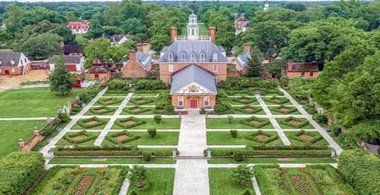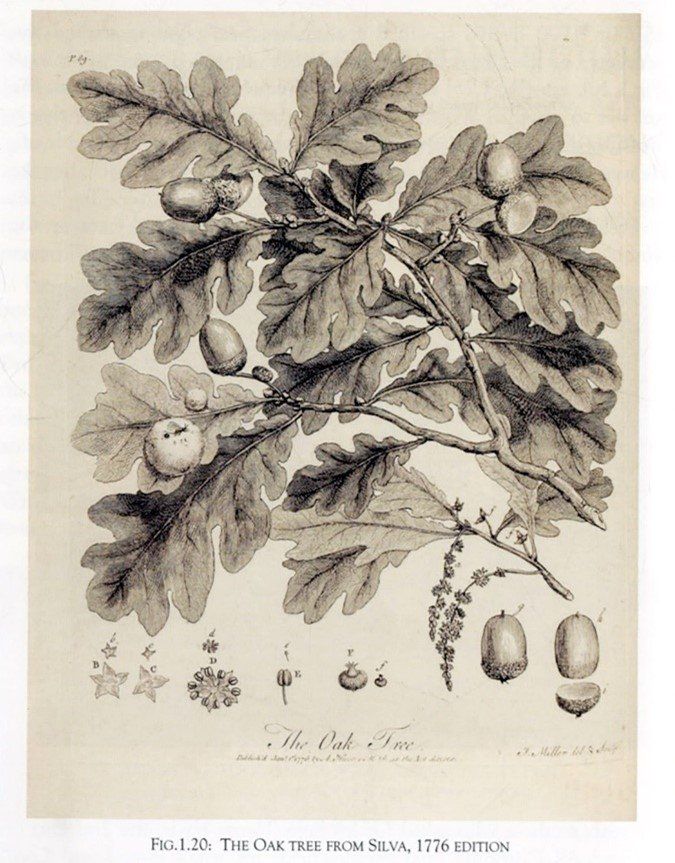Meet John Evelyn
How I Met an English Master Gardener from the 1600’s
“Hey Mom, I think you should take this online course.” Our son works in the Gardens at Agecroft Hall in Richmond, VA. Agecroft is a Tudor manor house shipped in pieces from England and reconstructed along the James River in the 1920’s. The online course was Oxford University’s overview of five centuries of English garden history, offering a background to the various gardens at Agecroft.

Agecroft Knot Garden
The course was described as using a VLE or Virtual Learning Environment which, in my technical innocence, I had hoped might include a set of goggles. But on further examination, the course rather relied on two large textbooks, various garden websites, and other reference sources. Our class would be assigned a tutor (very British!) who would summarize topics, guide our reading, and welcome posting discussions for the 10 weeks. We were encouraged to visit the gardens we studied. (Oh, how I wish!) Being somewhat housebound, I eagerly enrolled for my imaginary transatlantic flight!
Although this was a survey of English gardens, I discovered several connections with our own country. After all, in the 17th century we began as England’s colony! The early formal style of English garden is of course apparent in the maze and parterres at the Governor’s Palace in Williamsburg:

Over time, the increasing appreciation of nature led to more informal and naturalistic garden designs.
After the disruptions of our war for independence and our later civil war, more direct influences from England reappear in the 19th
century. Public parks for urban workers, Victorian floral patterns in suburban gardens, and the Arts and Crafts movement uniting house and garden were all reflected in the many regional variations in the United States.

But on to introducing my English MG friend, John Evelyn (1620 – 1706), writer, tree conservationist, and passionate gardener. He lived in a politically turbulent time and recorded both the Plague and the Great Fire of London in his famous Diary. These are crises that we can identify with today.

For over forty years he maintained his family’s 100-acre property as a sort of experimental research station and celebrated garden visitor attraction. Although nothing remains of Sayes Court above ground today, in the 17th century, it included miles of hedges and avenues, forests both evergreen and deciduous, and orchards of some 300 fruit trees. There were walled gardens of flowers and medicinal herbs, a laboratory and nursery, as well as a kitchen garden. Evelyn was the first garden author to write a book about salads, Acetaria: A Discourse of Sallets, promoting healthy eating with 73 choices of salad ingredients.
Evelyn has been called England’s first environmentalist. Fumifugium, written in 1661, warned of the dangers of London’s “Aer and Smoak” from coal fires. He also advocated the mass planting of trees, shrubs, and herbs to improve a city’s air quality. His interest in trees was combined with community concerns, much like the work of our Tree Stewards today.
As one of the founders of the Royal Society, the world’s oldest national scientific institution, Evelyn wrote their first publication, Sylva or a Discourse of Forest Trees, in 1664.

This is his most important and far-reaching work, a clear call for woodland conservation, for the preservation and replenishment of forests. I think it is also a call for all of us to plant trees, to look beyond our own lifetime. The pages are full of information on each tree, its history and cultivation, with practical advice led by the example of the author’s years of work at Sayes Court. The prime of place was given to the mighty oak. (Note Doug Tallamy’s recent book on The Nature of Oaks for a contemporary U.S. connection.)
Evelyn made revisions to the work for the rest of his life, even adding information on trees from the American colonies to the 4th edition (1706). He saw trees not just for their economic investment but for their beauty and variety, a shared resource which must be carefully guarded. His great love for trees was always apparent. In 2014 an updated and illustrated version, The New Sylva, was published, highlighting the ecological importance of trees for our century.
It was fun to take a college course with our son, and I assure you I was a diligent student, setting a good example! Since our online course topic began in 1650, I met Evelyn right away. His interests and character stayed with me for the duration, and therefore, I strongly believe that John Evelyn would be a valuable member of the NMGA today!

